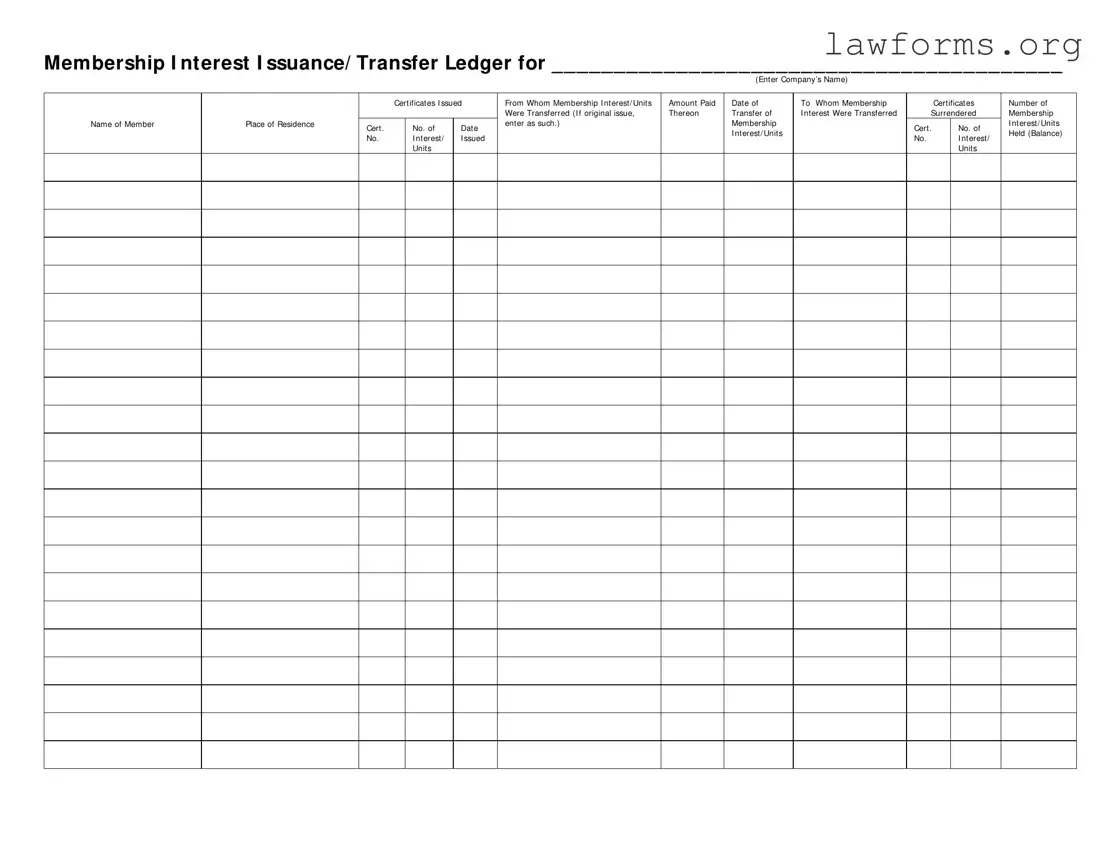Fill Out a Valid Membership Ledger Template
The Membership Ledger form is a document used to track the issuance and transfer of membership interests or units within a company. It provides a clear record of certificates issued, amounts paid, and details regarding transfers between members. For accurate record-keeping, it is essential to fill out this form correctly; click the button below to get started.
Customize Document Online

